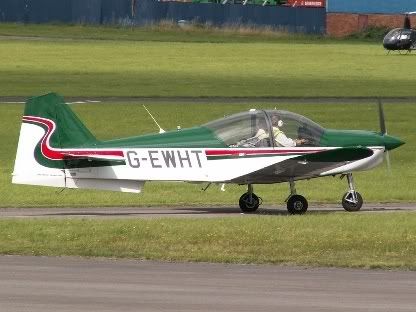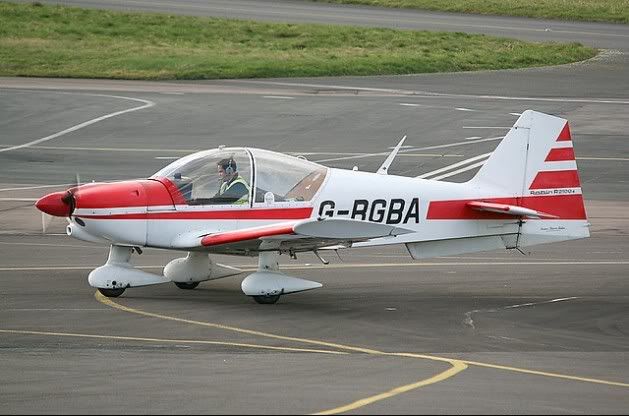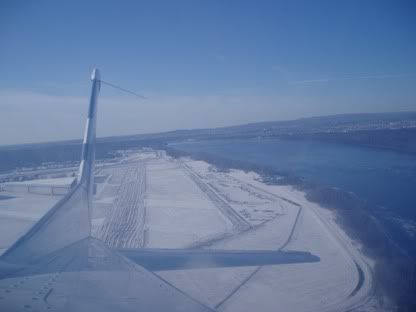I have been thinking about some formal aerobatics training for some time now. I have flown aerobatics, but only on ‘extra special treat’ type flights on three occasions now. Once, before I learned to fly, in a Jet Provost at Norwich, then once I had passed my PPL, an awesome days flying with Air Combat in LA in an Extra 300. More recently, in a T6 Harvard at Shoreham. That, and the opportunity to fly and be checked out in an aircraft that I haven’t flown yet, proved to be sufficient incentive to give it a go.
Next questions is where? I checked with a few people I know, and they unanimously agreed that ‘Ultimate High’ in Kemble were the dogs b*ll*cks.
I spoke to Ultimate High and yes, they do the AOPA course, but really only as a four day intensive programme on Monday to Thursday, with two sorties a day in a Bulldog. I would have been very happy with this, but just one snag…. I don’t have enough holiday this year and probably won’t next year either!
So plan B. My preferred local flying club, Cotswold Aero Club (based at Gloucester), do the AOPA Basic Aerobatics certificate, albeit in a Robin R2112 (not as nice apparently as a Bulldog). However, I could do this at weekends as and when I could find a training slot, so this looked just the ticket.
I booked what I thought was the first full lesson of the AOPA certificate, but the lady I spoke to assumed I only wanted an ‘aerobatic experience’ and only booked a half hour slot, so that was disappointing, but not the end of the world.
I didn’t see Max first, instead I saw a student he had just finished with (or probably an air-experience ‘victim’) wander unsteadily back to the club looking somewhat the worse for wear. ‘Did you enjoy it?’ his friend asked sticking a video camera into his face from short range, grinning. ‘Uh, yeah, uh sort of, yeah I guess so’ said the ‘victim’ as his eyes wobbled visibly like a cartoon character! ‘I thought it might be cold up there, mebbe I shouldn’t have worn the extra sweatshirt’ he rationalised. Thinks hmmmm….. aerobatics and feeling warm? Not a good combination – I suspect he ‘tossed his cookies’.
My instructor introduced himself as Max and briefed me on the three manoeuvres we would be looking at – the ballistic roll, loop and stall turn. He talked through the limiting RPM (actually a speed at this is not a VP aircraft), the entry technique and what to do at each stage.
Max gently enquires what experience I have and in particular what experience I have had of positive and negative ‘G’. Like a sensible aerobatics instructor, he is digging for how likely I am to ‘toss my cookies’ and therefore how readily available he needs to have a sickbag! I reassure him on this front that I have not yet ‘lost it’ with my limited but relevant aerobatics experience at the hands of a couple of people, including Air Combat USA in the mighty Extra 300 (closes eyes briefly as I think back to that great day two years ago or so).
Then off we went. As I am also new to the Robin, he saved time and started up, taxied out and did the take-off. I took over in the climb as we climbed at a not very impressive 500fpm at 75 kts.

We climbed and headed for the best of the weather to the north east around Bredon Hill and Damien Hirst’s house along the Cotswold ridge. He explained that he was cleared for aerobatics to well below 3000’, but that I must treat 3000’ as the ‘hard deck’ and never finish aeros below this height (to allow enough room to recover if it all goes pear-shaped).
We got to altitude and Max first showed me the ballistic roll. He explained that this was not an aileron roll, nor a barrel roll, but a bit of a mixture of the two, with an almost bullet-like movement about the longitudinal axis. First he showed me twice then I copied with a couple of rolls to the left. First the HASELLL check, then standard entry.
Standard entry consists of throttle to 2300 rpm, then nose down attitude to get 110 kts (from a rather stately cruise of 80 kts!), nose up a bit to an attitude that maintains 110 kts – this is basically the standard entry for all the simple manoeuvres I would be trained on.
From the standard entry, nose up sharply then stick fully over to the left and hold while the ground rotates around you (bizarre, but that’s how it feels!). Hold it hard over until the ground is the right way up, then stop the roll. The nose will be down by now and assuming the attitude to maintain 110 kts – so basically back to the standard entry position (this is quite deliberate as it means you can go straight into another manoeuvre in a sequence (altitude permitting of course!).
That was fun. If anything on one of them, he thought I rolled out a bit early, but said that was a typical beginners mistake.
Then onto a loop. He talked me through it again and demonstrated two. I didn’t have a go as we were again tight for time. Instead (probably due to the altitude loss and the time to climb back up) I did another roll.
All too soon, we had to head back. But on the way back, he demonstrated two ‘stall turns’ (aka Hammerhead in the USA). Basically this consists of a standard entry, followed by a pull up to the vertical, with rudder one way and ailerons the other (IIRC) as the plane then turns left or right at the top of the vertical until it is pointed straight down.
WOW!!!!!!! REALLY ENJOYED THAT ONE!!!!!Unfortunately, that’s all we have time for, so back in the circuit as he hands over to me to land from late downwind. I am initially confused as I have been flying a stick aircraft with my right hand and using the vernier throttle on the left with my left hand (the Robin has two throttle). Now I have to fiddle with trim and carb heat on the right. The trick is apparently to fly aeros with the right hand, but in the circuit with your left hand – OK, cool – all part of learning a different aircraft.
I wander a bit on base as I get the fell for the plane and the power settings, height loss, trim etc. I get set up at the required 65kts approach speed for runway 09. He again warns me NOT to try the ‘nose high – stall buzzer’ landing common in most training aircraft as the Robins are very easy to tail-strike. I land at a shallower angle than normal and as we fast taxi with the nose in the air, Max shows me how easy it is to tail-strike (there is of course a protective tailskid). I am amazed at how easy it is to do – lesson rammed home I guess.
Park up and shut down as he charges off to prep another student, I head back to the clubhouse and complete the logs and bills etc. I get a debrief and book the next lesson – a full one this time next Sunday at 16:00 (very few slots in the aircraft left by then). He says next time, weather permitting, well do spins and spin recovery (which, like most UK PPL’s, I have never done).
I buy a specific aerobatics book that Max prefers from him and of course trot into Transair next door to buy another (the AOPA basic aerobatics book).
THAT’S IT! I’M HOOKED!!!!! I will do the AOPA basic certificate and aim to do aeros on my own (or with a passenger of course) by renting the Robin, in addition to flying a non-aerobatic share (of course a share in an aerobatic plane that can also tour would be ideal, but none of those at Gloucester – where is a Bulldog when you need one?).






